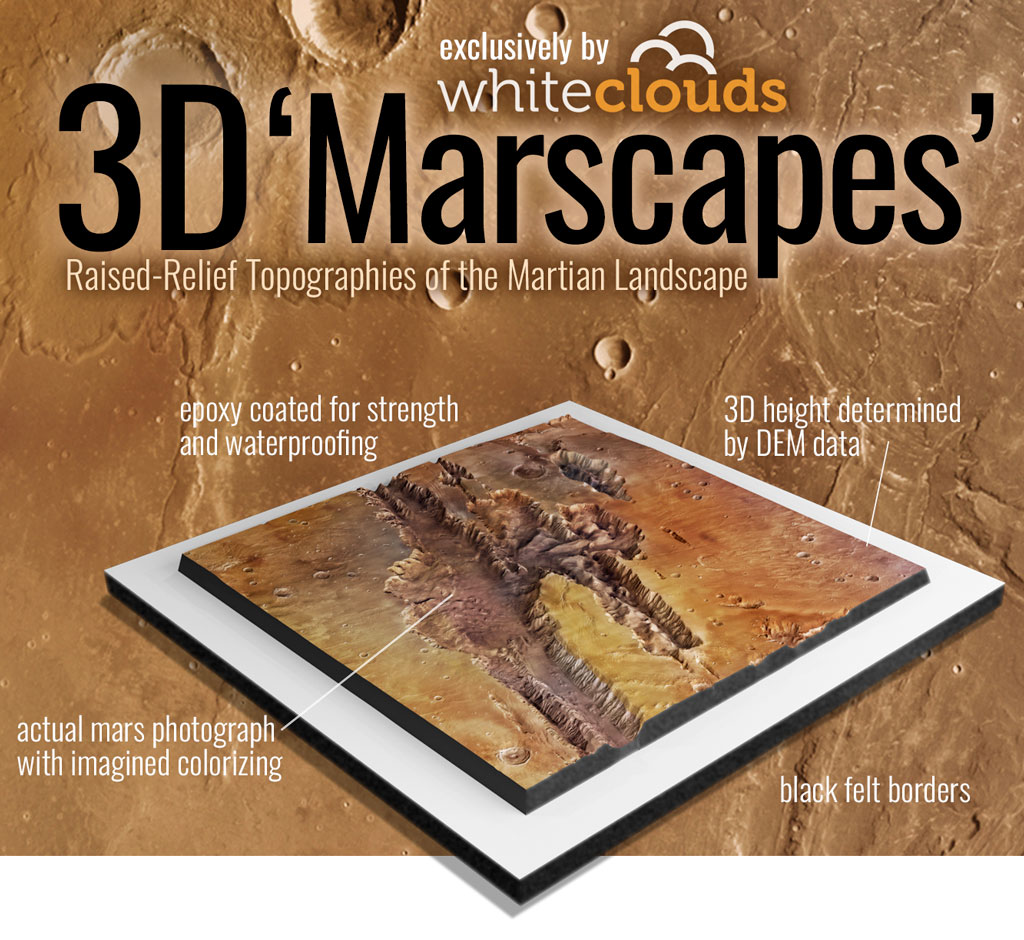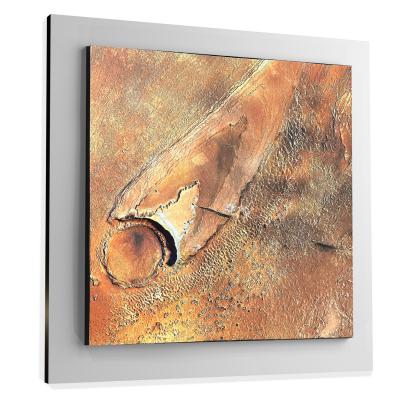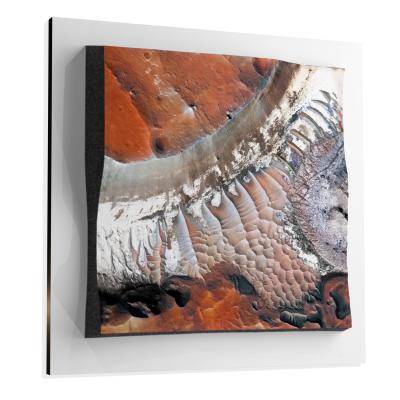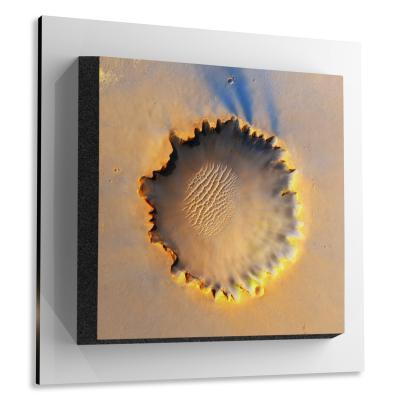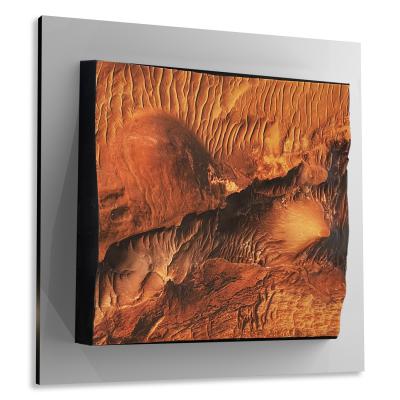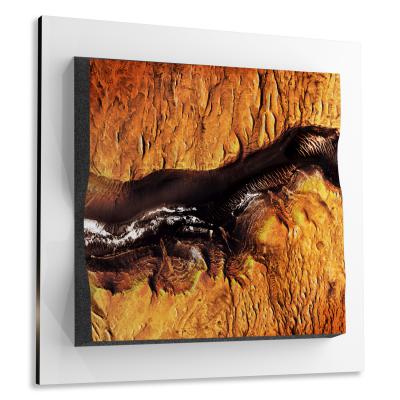Dust on Mars
Dust on Mars
We Build Custom 8K Mars Canvas Prints of Dust on Mars
Did you know we make
custom
8K Mars Canvas Prints

and
3D Marscapes

Dust on Mars
Dust on Mars is more than just a trivial matter of planetary housekeeping. This seemingly inconspicuous substance plays a critical role in the Martian climate, affects robotic and potentially future human missions, and can offer valuable insights into the planet’s history and geological processes. This report delves into the characteristics, sources, transport mechanisms, and implications of Martian dust, providing a comprehensive understanding of its role in shaping the Red Planet’s surface, atmosphere, and potential for supporting life.
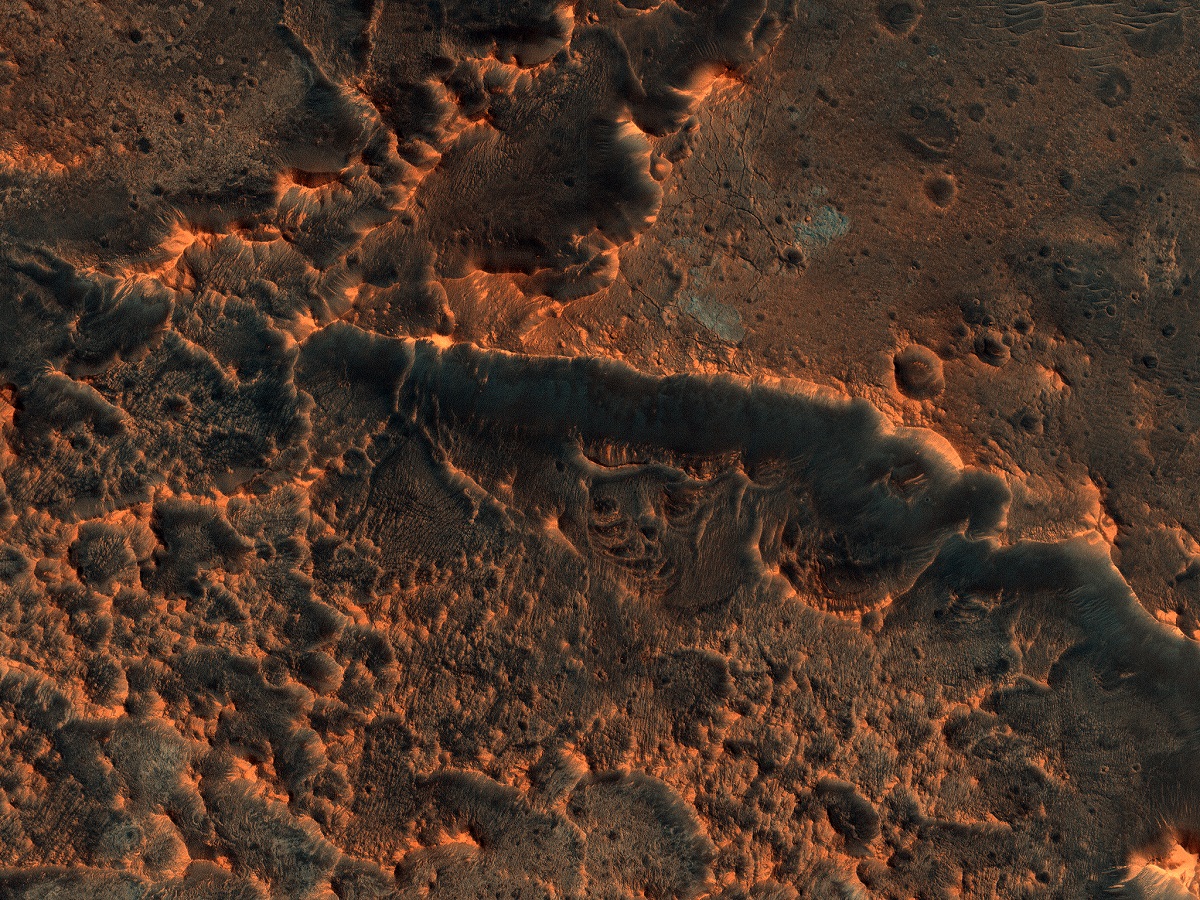 Dust Erosion from the Surface
Dust Erosion from the Surface
Characteristics of Martian Dust: Physical and Chemical Properties
Martian dust is a complex material with fascinating characteristics that have implications for our understanding of the planet and for future missions to Mars. Physically, the dust particles have a wide range of sizes, but most fall within the 3 to 50 micrometers spectrum. This size distribution has interesting consequences for how the dust behaves. Smaller particles are more easily lifted by Martian winds and can become suspended in the atmosphere for longer durations. In terms of composition, Martian dust is mainly made up of silicates, which are mineral compounds containing silicon and oxygen. There is also a significant presence of iron oxides, which give the Martian soil its distinctive reddish hue. In addition to these primary components, trace amounts of other minerals can be found, which could provide critical clues about the planet’s geological history and potential past environments that might have supported life.
Notably, some Martian dust has magnetic properties. These particles contain magnetite, a magnetic mineral that enables the dust to adhere to certain surfaces, affecting both natural geological formations and human-made structures like space rovers. This magnetic aspect of the dust is a subject of interest, not just for its implications for exploration but also for understanding the planet’s geological processes.
Chemically, Martian dust is highly oxidizing due to the presence of perchlorates. These chemical compounds are not only of scientific interest for understanding the Martian soil chemistry but also have implications for future human missions, given their reactive nature. Another factor of great concern is the toxicity of Martian dust. The fine-grained nature of the dust means it can be easily inhaled and, due to its chemical composition, could be harmful to the human respiratory system if protective measures are not in place. This is an essential consideration for mission planners in both robotic and potentially human missions to Mars.
Advertisement
Sample Marscapes
Sources of Martian Dust: Geological and Extraterrestrial Origins
Martian dust doesn’t merely exist; it comes from specific sources that are critical to understanding the planet’s geological history. The absence of liquid water on the Martian surface places a significant emphasis on mechanical weathering as a primary source of dust. Wind erosion plays a crucial role in breaking down rocks and other hard materials, dispersing fine particles across the landscape. Furthermore, Mars has a history of volcanic activity, which has likely contributed to its dust reservoir. While no active volcanoes have been definitively identified, there are regions on Mars with geological formations indicative of past eruptions, which could have emitted volcanic ash and other fine materials. Another compelling source is meteorite impacts. The Martian atmosphere is much thinner than Earth’s, allowing more meteorites to reach the surface. The impact events can grind and distribute materials, adding to the existing dust layer.
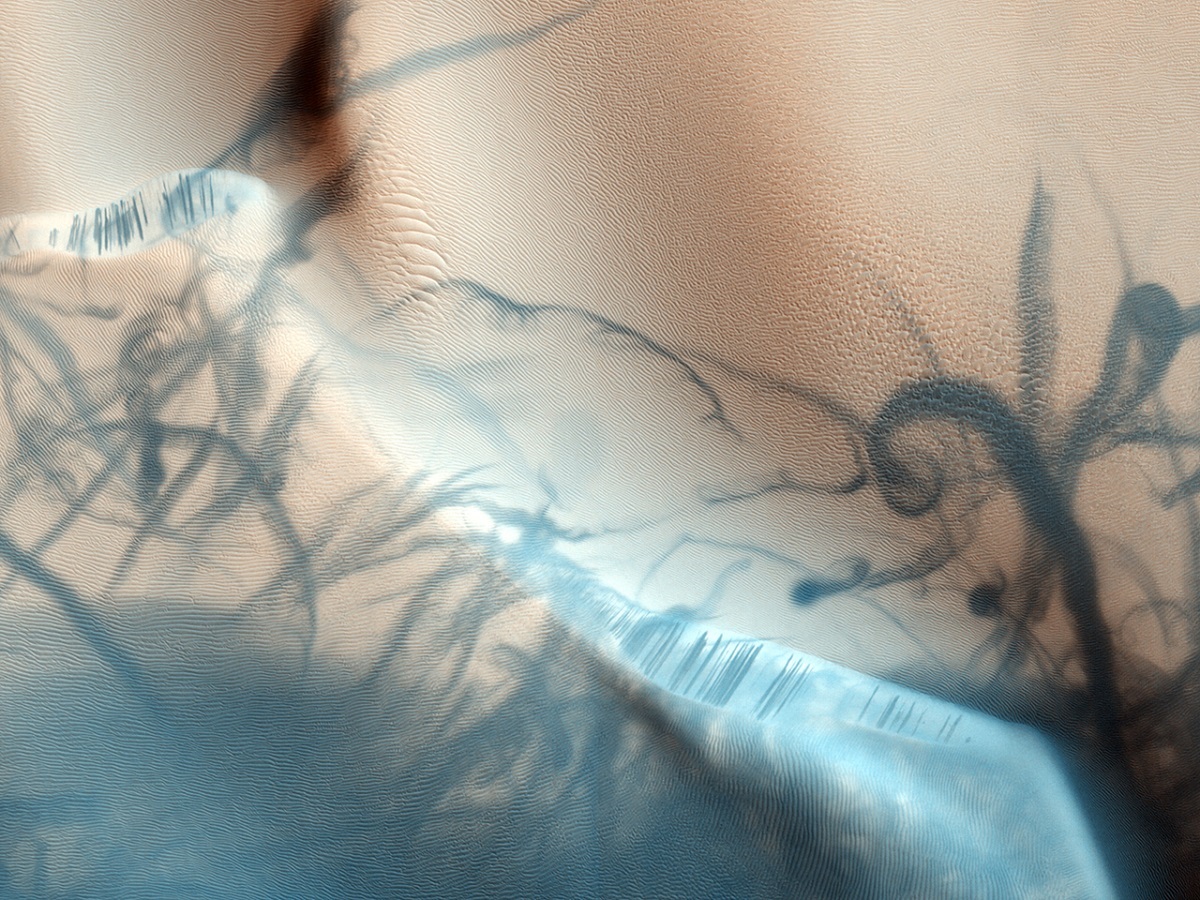 Dust Devils on Mars
Dust Devils on Mars
Transport Mechanisms: The Role of Winds and Seasonal Variations
The movement of Martian dust is chiefly controlled by aeolian, or wind-driven, processes. Dust devils, which are localized wind systems, can lift dust off the ground and disperse it over short distances. On a much grander scale, Mars experiences global dust storms that can last for weeks or even months, covering the entire planet with a thick layer of dust. These storms have a significant impact on Martian climate, visibility, and even mission operability. Seasonal changes also contribute to dust transport, particularly in the polar regions where shifts in temperature and atmospheric conditions lead to the seasonal deposition and removal of dust layers on top of polar ice caps.
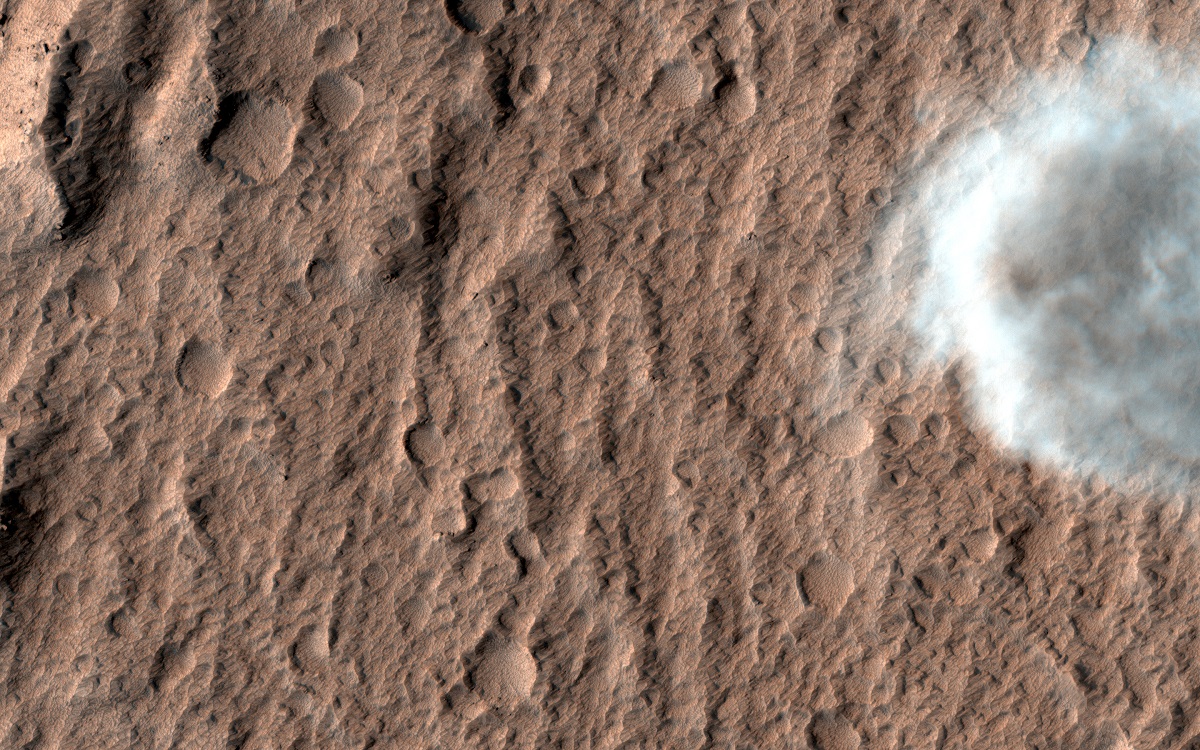 A Dust Devil on Hilly Terrain
A Dust Devil on Hilly Terrain
Dust in the Martian Atmosphere: Atmospheric Implications
Dust particles in the Martian atmosphere have considerable consequences for both natural phenomena and scientific measurements. They contribute to the overall opacity of the atmosphere, which in turn affects visibility and the performance of imaging instruments. Radiative forcing is another crucial aspect influenced by atmospheric dust. The particles can absorb and scatter sunlight, significantly affecting the planet’s energy balance. These variations in energy distribution have cascading effects on Martian weather and climate.
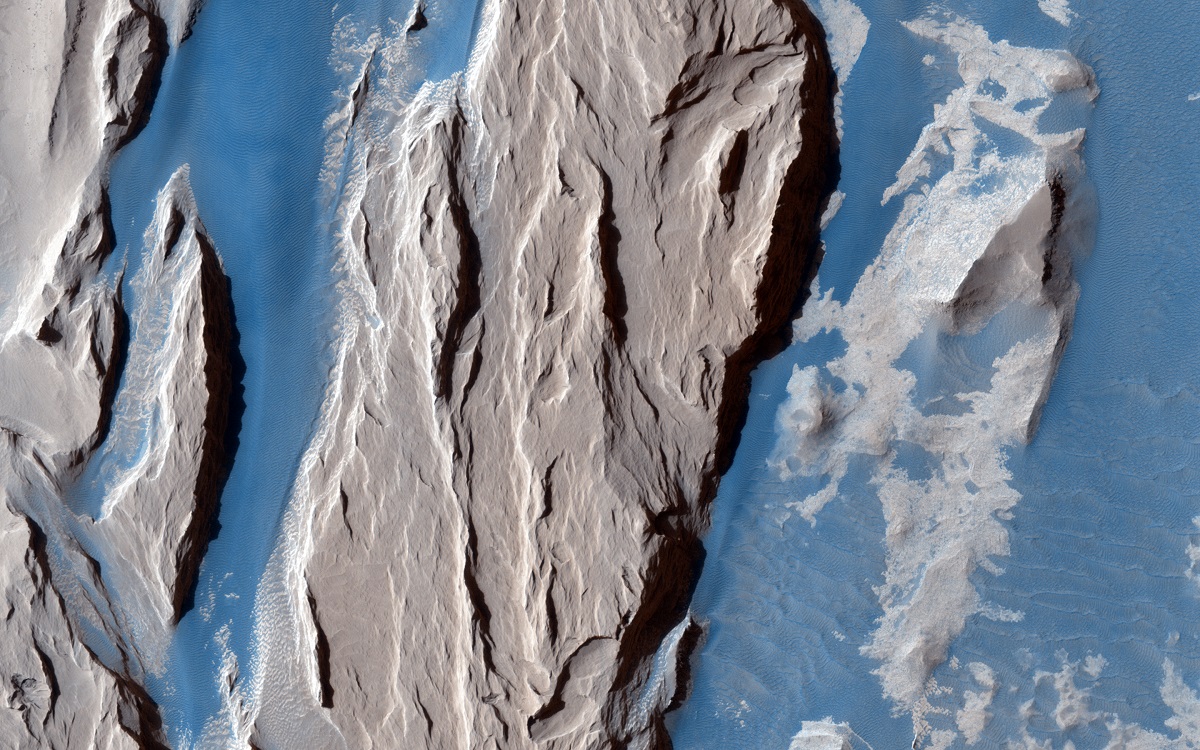 Western Medusa Fossae Formation-Dust and Dunes
Western Medusa Fossae Formation-Dust and Dunes
Dust and Martian Climate: Weather and Water Cycle
Martian dust storms can lead to a rise in temperatures by trapping heat in the atmosphere. This thermal effect creates feedback mechanisms that can extend the duration and influence of dust storms, making them a crucial component of Mars’ climatic system. Dust also has a role in the Martian water cycle, as the particles can serve as nuclei for the formation of water-ice clouds. Understanding these interactions is key to modeling the Martian climate, which, in turn, is crucial for mission planning and scientific investigations.
Impact on Exploration: Technical and Health Risks
The presence of Martian dust poses both technical and health challenges for exploration missions. Dust accumulation on solar panels can degrade their efficiency, impacting the energy resources of robotic explorers. For future human missions, the toxicity and reactive nature of Martian dust pose a serious health risk. Adequate protective measures must be implemented to safeguard astronauts from exposure, both during extravehicular activities and inside habitats.
Scientific Importance: Geological Clues and the Search for Life
The composition and characteristics of Martian dust offer important insights into the planet’s geology. For instance, the mineral content can provide clues about the planet’s volcanic history and perhaps even hint at past water activity. From a climate perspective, dust plays a crucial role in computer models that attempt to simulate Martian weather patterns. Interestingly, dust may also be important in the search for life on Mars. Organic molecules, if present on the planet, could adsorb onto the surface of dust particles, making them carriers of potentially significant biological markers.
Dust on Mars is a complex and multifaceted topic that has implications ranging from scientific inquiry to space exploration. Understanding its characteristics, behaviors, and influences is essential for both future robotic and human missions, as well as for the broader scientific goals of understanding Mars as a dynamic system.
Understanding Martian dust will not only enhance our knowledge of the planet but could also provide insights into Earth’s past, present, and future. As Martian exploration continues to advance, so will our understanding of this seemingly mundane yet profoundly impactful aspect of the Red Planet.
Check out our 3D Mars Learning Center for more information on Mars and Dust on Mars. You can also learn more at: NASA Mars Exploration.
More About Mars
Contact us today to learn more about our 3D services and how we can help you achieve your goals.
